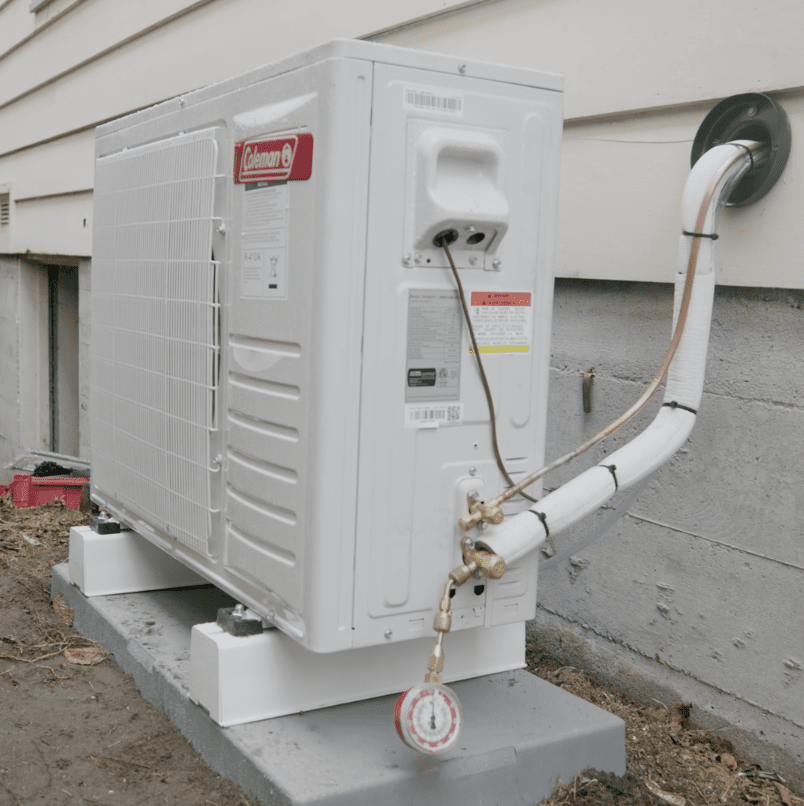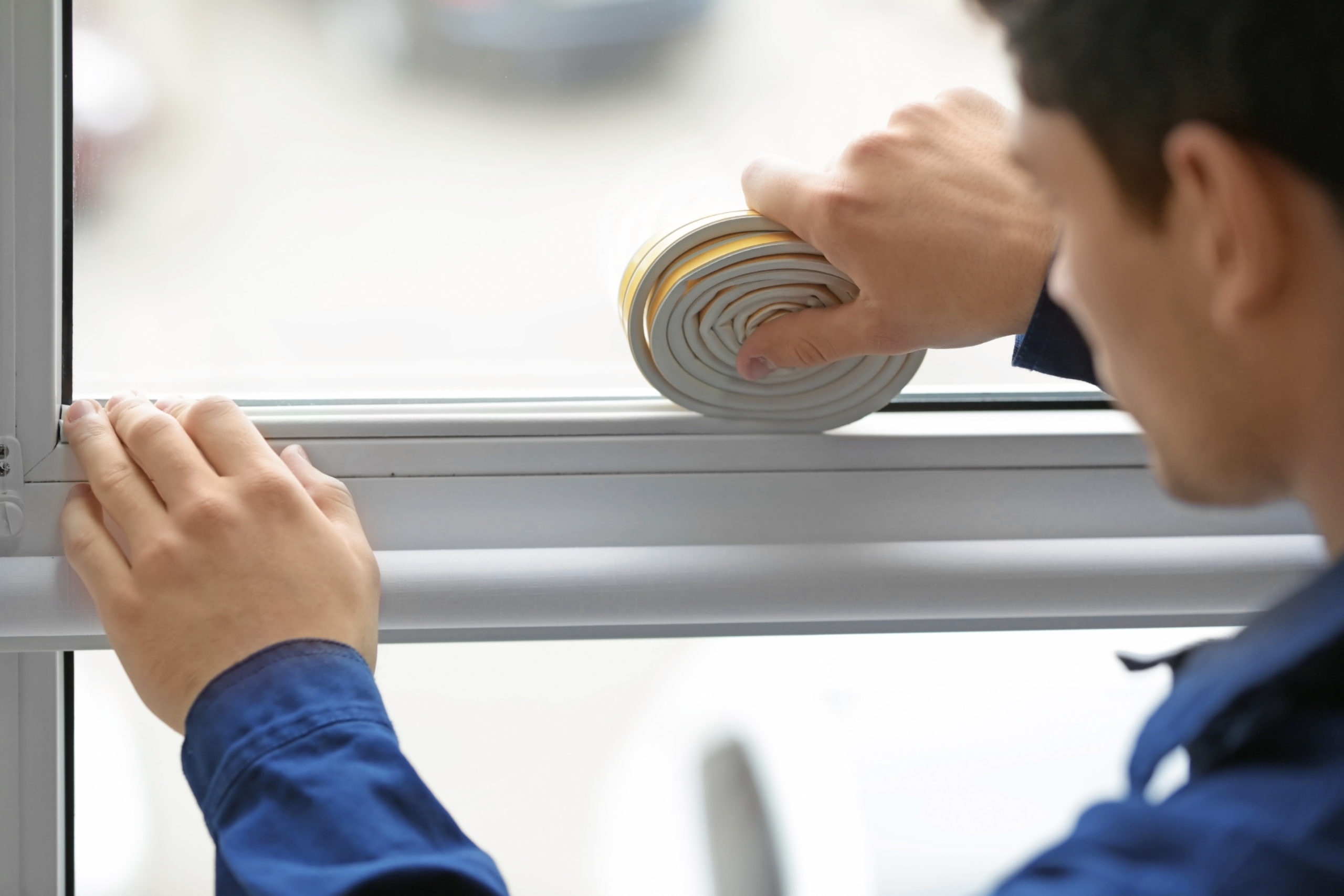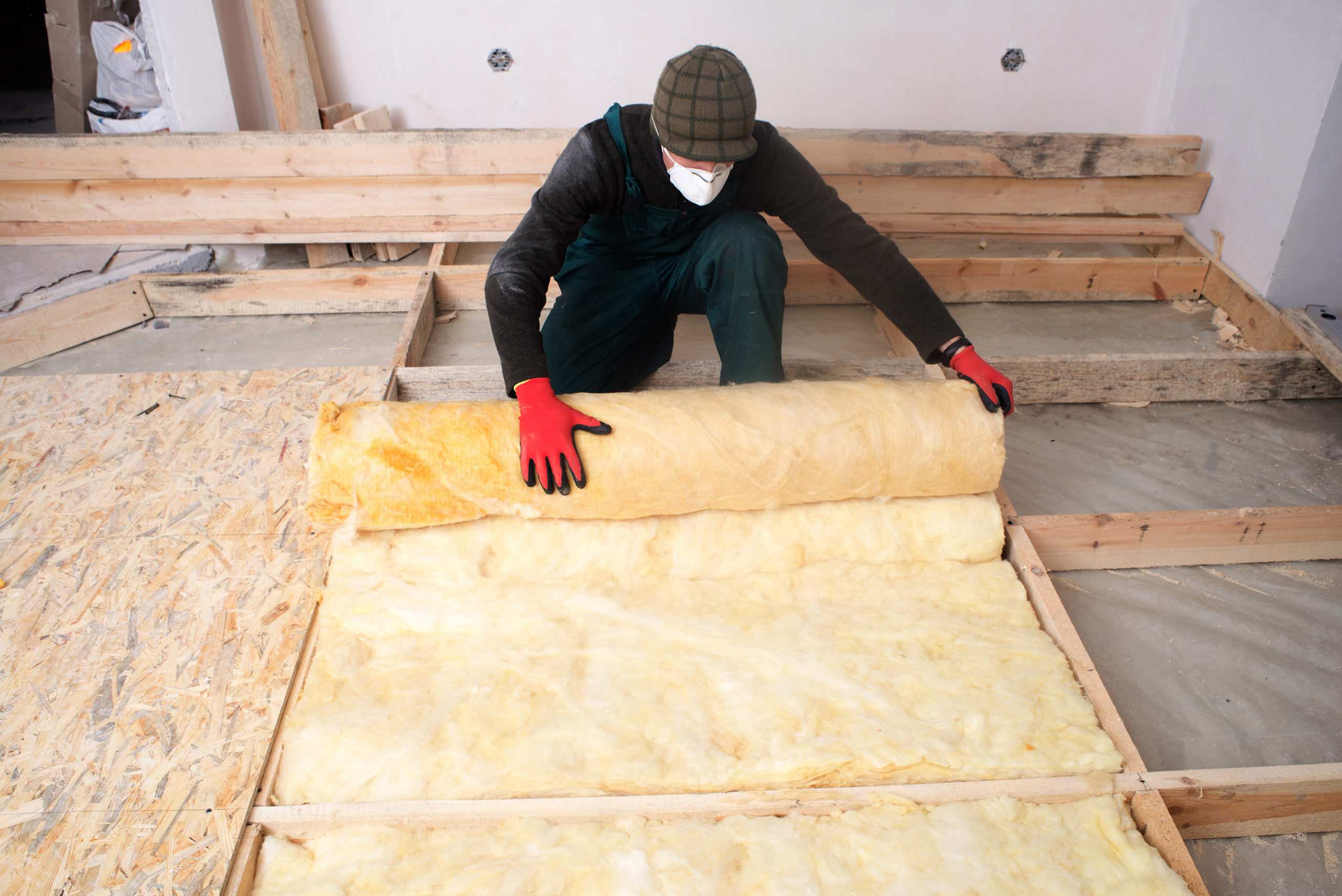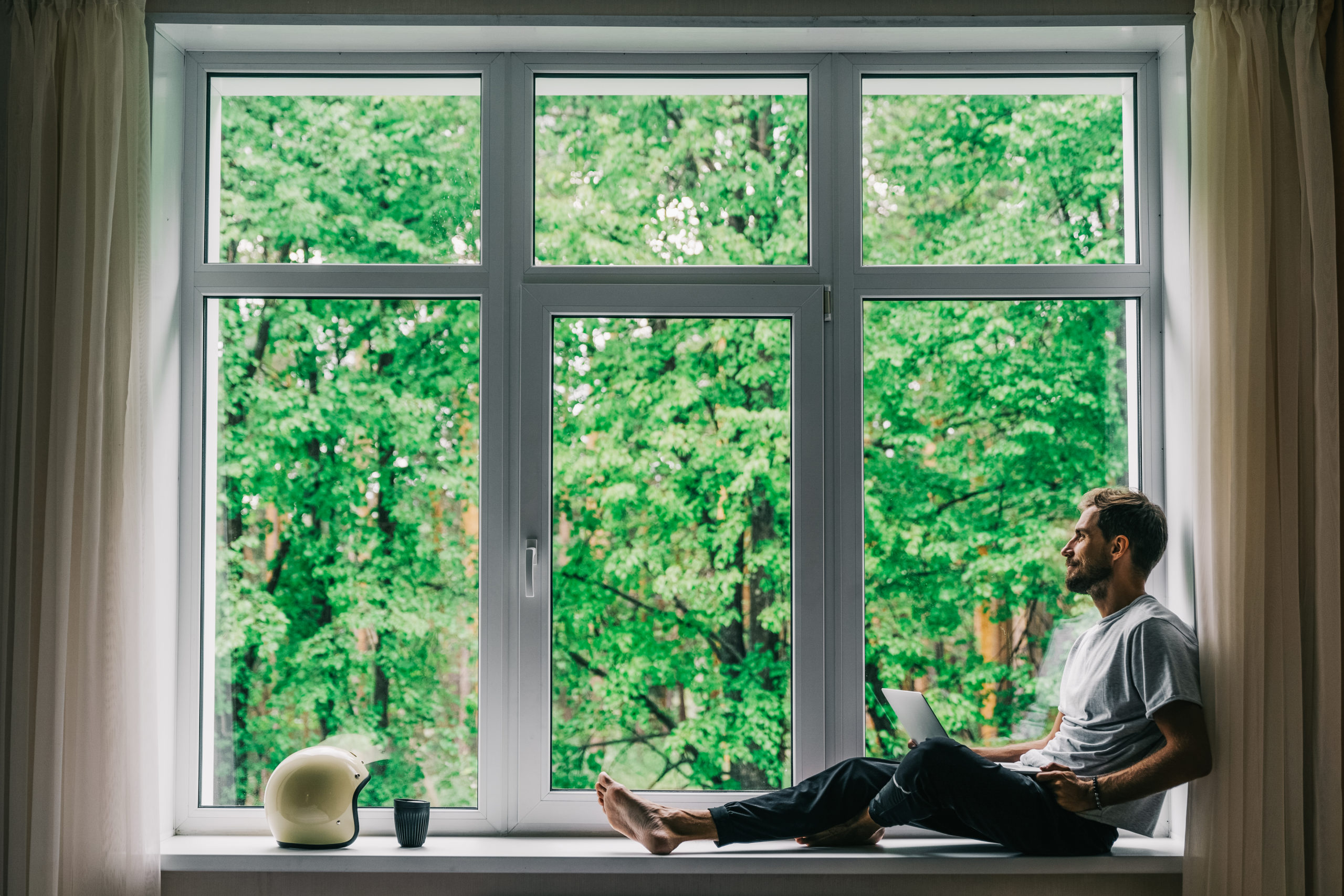Episode Transcript
My name is Jake Millan, and I am obsessed with sustainability. From selling biofuels to building micro grids, I have devoted my life to battling climate change. The global warming clock is running out, and if we don’t do something now, we are not going to make it. Like many… I don’t wanna wait for my kids to try and fix this. This is our problem, and we all need to do more to reduce our carbon emissions. For most of us, our homes are the biggest polluters, more than cars, more than food, the biggest. So I’m on a mission to figure out how we can get every home to net zero by 2050.
We’re here in the Queen and neighborhood of Seattle, where I’m gonna put everything that I know about sustainability to the test with this 1940s era home. Instead of tearing it down, which we cannot do with the 140 million homes in the US, we need to figure out an efficient and financially attractive way to retrofit these homes and make them all net zero by 2050. So over the next series of episodes, we’re gonna be going through different projects with this specific home on how we can get it as close to net zero as possible.
Really, one of the things that we’re trying to learn more about is what does it take to retrofit these homes, give them a whole home energy makeover instead of tearing them down and rebuilding a home. This is a great two-bedroom home; it’s got a big backyard and the idea is to renovate it and create a working home that will work for my mother-in-law or maybe another couple for decades to come.
These climate change solutions, they do typically cost a little bit more on the upfront cost, but the calculations that most home owners are not doing, unfortunately, is looking at: what is the cost to install this right now, and then what is it gonna cost me to operate over the lifetime of the product. And so what you wanna find is something that has the lowest life cycle cost over the total time that you’ll own it.
So in order to really highlight the benefits of all the projects that we’re gonna do on the home, we need to establish a baseline before and a baseline after. So we’re bringing in Bob Greenspun from Simplicity Home Energy, and he’s going to do a blower door test. He’s gonna check to see how tight the home is from an air leakage standpoint, he’s also gonna look at some of the blown insulation that’s above the ceiling in the attic, and he’s also, my guess is, going to recommend that we put some insulation under the floor that’ll, again, really improve the comfort of the home.
I am an independent expert that can analyze a house, do computer modeling of the house, and then I take all those data points, including things about duct work, windows, doors, heating, hot water, appliances, lighting, and put that all into a computer model to help generate some predictions about what kinds of savings to expect.
Wanna show me around a little bit?
Yeah, that’s great. Let’s go for a tour.
Okay, great.
Alright. So down in a cross-space, there’s a lot of concerns, indoor air quality, insulation, trying to prevent that crawl space air from getting into the main living space, and of course in this situation, the heat source and the duct work is down here as well.
So right here, I don’t know if you can see this, but where this duct goes through the floor, there’s a gap in the penetration, so again, more air from the call space is sneaking in around here and pulling into the living space. If you keep the duct work, then that definitely has to be air-sealed around here with that can spray foam stuff. Really easy to do.
And then of course, any of the plumbing, this stuff here, this is carrying hot water, these should be insulated so that it’s not shedding heat as it’s running through here. Iif you go to a more efficient heat pump, the total cost of heating your house gets smaller. I’m curious what choices are gonna be made…
Well, we’ll see here, Bob.
Oh, Okay. Oh. So…
No good?
That’s vermiculite.
Okay, that’s not good.
So I don’t feel safe running a blower door test today because of the presence of this type of insulation here. It often contains asbestos, and if we do a blower door test, it’s gonna pull those fibers.
Through all the light fixtures or anything that…
Exactly. It’s just not safe to do.
Yep. Got it. Okay.
So, I’ll crawl in, I’ll take a little closer look, try to figure out how far down this goes.
Well, I’m glad we found that out here sooner rather than later.
Yeah. Yeah.
Like every house, you never really know what to expect and I think we got a few surprises today. Finding vermiculite in the attic, it really prevented us from doing a blower door test. Things can’t go forward until that gets tested. If you’re really going for zero, it’s gonna cost a little bit more, but it’s definitely well worth it, and it’s gonna improve the indoor air quality, which is of huge concern, and the comfort
To try and get a baseline on the house, it was discovered that there was vermiculite up here, so because of that, we couldn’t do the blower door test, we then got a crew to come up here, they completely removed all of the asbestos, all of the old insulation, they vacuumed every last little bit up, and then we brought another crew in, they sealed all of the little air leaks that could exist, and then they blew in this R-38 insulation. This will provide a good layer in our attic to keep that heat in the house, and more importantly, we sealed all those little air holes, so none of that he’s gonna be escaping out of the ceiling or the roof.
We are back, and we’ve got Bob Greenspun from Simplicity Home Energy here to do the blower door test, where in essence, we’re gonna find out how leaky this house is or how tight the house is in terms of air flow, can you tell us a little bit about what this blower door is and how it works?
Yeah. So we are going to be able to measure the air exchange rate, how much air leakage there is or how drafty the house is. And then once we know that, using math, we can calculate that air exchange rate even under normal conditions. We wanna get in that “Goldilocks” zone. Not too tight, so that we would be getting condensation, mold growth, not enough oxygen, smells not dissipating, but not too much air leakage, where we’re losing heat or in the summer letting warm air in, so we’re gonna not only be able to measure our air leakage, but then using an infrared camera, we’re actually going to see where the air leaks are occurring, and then that will help the air sealing people whether it’s you or you have a weatherization company come in to do it, and air seal a house pretty effectively.
Yeah, let’s turn this gigantic fan on. Whoa! I can already feel it right here.
Based on what we’ve calculated from the blower door, if we were targeting 35% as the optimal exchange rate, that “Goldilocks” zone… We’re not at 35%, we’re at 92%.
Wow
So that’s two and a half times more air leakage than is desirable.
A 92% air exchange rate. Yikes, what that means is there are a lot of holes in this house, they’re in the ceiling, they’re in the attic, they’re in the walls, they’re in the windows, they’re in the vents, and we need to plug all of those holes up with either some spray foam or some caulking, and it’s really important because otherwise, all of our heating and cooling is just gonna go straight through all those holes.
Let’s turn this fan back on, get the infrared camera out, and then we’ll pin point where some of this air leakage is occurring.
I think that sounds great. Let’s do it.
Alright, so here’s the first fun thing, come and stand next to me, Jake.
Oh, because we’re going at the window.
Right. We’re shooting at this window right now, and you can see Ryan, our cameraman, behind us, so… Yeah, this is our heat, so when we start to apply that over to these areas, these colder sections come out blue, we look at the front door here, and we can see the air leakage around the edges… Right, so that’s… I see it at the top, I see it underneath.
I mean, this feels like a fan that’s turned on.
Exactly. That’s amazing. Any time you cut through the floor, there’s inevitably going to be a gap. Do you see the gap between the boot and the floor cutout, put your hand down by that gap? Oh yeah, okay. It’s not coming out of here, it’s coming out of the side of it, so that tells us the duct work itself is pretty tight, but the problem is the gap around the boot. That’s incredible. To use a can of spray foam to air seal around that is going to be a five-minute task, and it’s going to do so much because you don’t want to breathe that crawl space air. I mean, this is incredible. Just look at this infrared here, just see all this, all this streaking around here, that’s that cold crawl space air getting pulled into the house.
That’s incredible. Alright, Bob showed us exactly how leaky this home is, so now we have a baseline with which to determine what the carbon emissions of the home are and how we can start to make it better, so let’s go look at what those carbon emissions are and do those calculations. This 800 square foot house is located in Seattle, Washington. The primary heating source of the house and the water is natural gas, and there’s currently no air conditioning, the house is about 80 years old, and most of the appliances in the home are well past their useful life. As we saw from Bob’s audit, the house is letting in way more air in and out than it should, and we estimate that’s causing the house to use 30% more heat than it would need if it was better air sealed.
Combining all these factors we calculate that this house produces just about 12,000 pounds of CO2 per year, and that’s a lot of greenhouse gas passed back into the atmosphere. Right now, 30% of that is coming from the furnace alone, so for the next episode, we will replace that old gas furnace with a new efficient heat pump and see just how much CO2 we can save.
Thanks for joining me on Going for Zero.
Learn More







